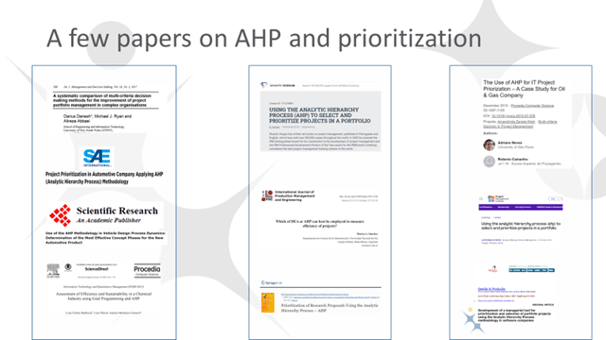PMO Cluedo - Murder in the Boardroom?
Updated:
Published:
 Your portfolio is being murdered...
Your portfolio is being murdered...
We've all played the game Cluedo, right? (It's called Clue in North America and Detetive in Brazil).
It's a board game with the goal of finding the murderer, the weapon and the room in which the murder happened.
So let's play PMO Cluedo and find the murderer!
You have too many projects and your team is perma-stressed-out. It's difficult to allocate resources to the most strategic projects and you have higher-than-ideal project failure rates.
Your portfolio is really not supporting your strategic goals.
So who killed the portfolio? Well, to jump ahead a little...
It was the leadership team in the board room with a spreadsheet!
The Leadership Team?
No, I haven't lost my senses and finally gone mad.
Many portfolios (and projects) are doomed from the start. Research shows that 40% of the causes of project failure happen "before the project is even started".
These failures happen at the portfolio governance level and some main ways to destroy value before even starting a project include;
- Attempting to do too many projects is a real killer,
- Selecting projects that aren't aligned with strategy and which drain resources - and suck the life - from "good projects"
I've covered these topics elsewhere, so click through to learn more if you're interested.
What's important for this blog is that project prioritization and selection are key aspects of portfolio governance. It's the leadership team that is responsible for making these decisions.
But it's not the leadership "to blame".... it's the methodology you're using.
And that's easy to fix!
The Spreadsheet Made Us Do It!
Most organizations that I talk to have some kind of spreadsheet-based process to capture, evaluate and select projects.
If you hunt around online, you'll find plenty of videos showing how you can use a spreadsheet, or a simple matrix, to select projects. I'm sure most of these videos represent a genuine attempt to spread good practice, but the research indicates that this is certainly not "good practice".
PMI data tells us that 20% of projects are simply not aligned with goals. At the same time, 50% of projects are not resourced properly.
That's what all those spreadsheets have given us. In other words, typical scoring spreadsheets don't work terribly well.
Following poor advice (that is all-too-common online) can lead to some really bad results. The following graphic shows the "scores" from a fairly typical spreadsheet scoring mechanism.

This is real data from a real customer. The line simply plots the "score" each project received from the spreadsheet model ordered from high-to-low.
As you can see, there are large groups of projects that have the same score (red boxes). If you define such a plateau as more than 5% of projects having the same score, almost three-quarters of projects in this example sit on a plateau.
Let's be clear what this means. All the projects on a plateau have the same score which means you cannot discriminate between good and bad projects.
The spreadsheet may give the impression of "science", but it's actually making good project selection more difficult.
This video (around 13 minutes) is fun, but looks at a couple of "war stories" of what happens when your prioritization spreadsheet bites back!
But if spreadsheets have the potential to bite back, is there another way to prioritize projects, one that works?
Good Project Prioritization Methodology
Many people are surprised to learn that there has been a lot of research into how to prioritise and select projects. In 2017, researchers in Australia brought all of the methodologies together - over 100 different methodologies - and the result was rather surprising.
Only two methods were suitable for project prioritization.
Those methods are called DEA and AHP. Of the two, AHP is much easier to use and it's the method we use at the heart of our project prioritization software.
You can learn more about these two methods in our Ultimate Guide to Project Prioritization. While AHP (which stands for the Analytic Hierarchy Process) is, in principle, similar to putting together a weighted scoring spreadsheet, the way it's done - the methodology - is fundamentally different.
AHP has been developed and enhanced over 40 years with feedback from disciplines like decision science, operations research and psychology.
Okay, maybe research isn't your thing, but this solid grounding means that AHP has been developed to help reduce the bias and errors associated with traditional project selection methods.
Done right, AHP includes methods to select criteria, to build effective scales, to discover criteria weights, to running effective workshops... and more.
In other words, AHP is not just a spreadsheet. It's a whole methodology, and it's a methodology that works.
Here is just some of the research documenting the effectiveness of AHP. Your "online guru" can't show you similar research showing that their spreadsheet works.... because they simply don't have any evidence!

Set your Execs Free
Okay, so the premise of this blog is meant to be fun and thought-provoking. The execs don't really "murder" the portfolio - murder is deliberate. Selecting too many of the wrong projects is not a deliberate act.
The problems with project prioritization and selection typically boil down to using the wrong methodology.
But the end result is the same. You have too many projects. This over-stretches your team and reduces their ability to delivery quality projects.
At the same time, working on too many of the "wrong" projects means that projects that really do add value are starved of the resources they need, as illustrated in this animation.
You can fix this, and you can fix it quickly.
No more murder in the boardroom, just great projects!
